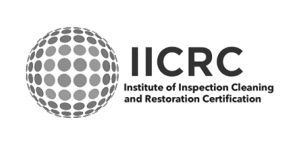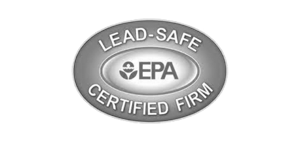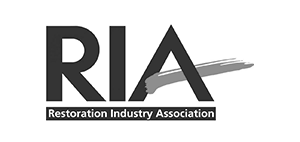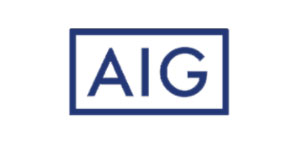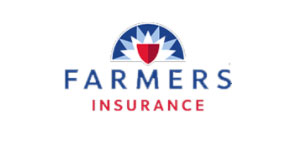Did you know that cooking fires are a leading cause of commercial property devastation? They account for a significant percentage of all fire incidents. This shows how fires can deeply affect human life and property. It’s important to understand the damage fires cause to prevent and manage them.
Fires can destroy buildings, furniture, and personal belongings. They leave behind extensive debris and smoke damage. The methods used to put out fires, like water and chemicals, can also harm structures. This can soak and spoil interiors.
Property loss from fire goes beyond physical damage. It also risks human health. Exposure to smoke and toxic fumes can cause respiratory problems like bronchitis and asthma. In severe cases, it can be fatal.
The effects of fire destruction are not just physical and financial. They also have emotional and psychological impacts. The trauma from such incidents can disrupt lives, displacing individuals and families. It requires long-term recovery efforts. Understanding fire damage means looking at both immediate and long-lasting impacts.
Key Takeaways
- Cooking fires are a significant risk in commercial properties.
- Electrical wiring fires highlight the need for regular maintenance checks.
- Heating unit fires require proper installation and regular servicing.
- Smokers should use designated areas to prevent accidental fires.
- Intentional fires like arson stress the need for monitoring systems and protocols.
- Properties in wildfire-prone areas should take preventative measures against wildfires.
Types of Fire Damage
Fire damage can take many forms, each with its own set of challenges. Knowing the different types of fire damage is key to effective recovery. We’ll explore the main types of damage fires can cause.
- Structural Damage from Fire: Fire’s intense heat can weaken buildings, causing warping, cracks, or even collapse. It’s important to get a detailed report on structural damage to understand the extent and cost of repairs.
- Smoke Damage: Smoke can get into many surfaces and materials, leaving marks and a smoky smell. There are different kinds of smoke damage:
- Wet Smoke: This smoke, from fires in synthetic materials, is sticky and hard to clean.
- Dry Smoke: From fast-burning fires of natural materials, it’s powdery and easier to remove.
- Protein Smoke: From fires involving food, it has strong odors that are hard to get rid of.
- Water Damage: Firefighting uses lots of water, which can damage materials. This can lead to mold if not dried quickly. Special tools are used to remove water and dry the area with air movers and dehumidifiers to stop further damage.
Some fires, like electrical or cooking fires, cause special kinds of damage. These fires need specific actions during the recovery and restoration process.
Fire damage does more than just harm buildings. It can also lead to financial loss, health issues, and emotional trauma. Quick and thorough assessment and restoration are crucial to lessen these effects.
Fire Damage Assessment and Repair
After a fire, it’s key to do a fire damage assessment to plan repairs. A pro will visually inspect to see how much damage there is and what it will cost to fix. Knowing how fires start and spread is also important.
The guide talks about the four stages of a fire: ignition, growth, fully developed, and decay. Each stage has its own challenges. Different fires, like solid material, liquid or gas, electrical, metal, and kitchen fires, need different approaches for assessment.
An effective fire damage assessment includes several steps:
- Structural Damage Evaluation: Check structural parts like beams and walls to see if they’re damaged.
- Smoke and Soot Damage Analysis: Find out how much smoke and soot have contaminated the area.
- Water Damage Inspection: Look for moisture in walls, floors, and ceilings from firefighting.
- Content Inventory and Evaluation: Check personal items and property, making an inventory of what’s damaged.
- Air Quality Testing: Test for pollutants and toxins to make sure the air is safe.
In commercial settings, there’s more to consider, like how the fire affects business operations and inventory. This detailed assessment helps figure out what needs to be fixed first and how to avoid more damage.
Using techniques like restorative blasting can help clean up soot and smoke. This helps save materials and lowers costs. The goal is to make the property safe and usable again, with minimal disruption to businesses or residents.
It’s also important to document and certify fire damage inspections and repairs. This shows the need for ongoing learning and skill improvement in this field. Fire can cause structural steel to sag or distort. A thorough assessment helps decide what can be reused and what needs to be fixed or replaced.
Replacing parts like gaskets and flange bolting that got too hot is usually best for safety. HEZ maps help figure out temperature zones and what areas might have been hottest. This helps make smart choices during fire damage repair.
In summary, knowing the effects of fire on buildings and using the right repair methods are key for successful fire damage restoration.
Conclusion
Understanding how fire affects buildings is key to recovery and prevention. Past fires have shown different impacts on communities. Many households had to leave their homes and some moved several times in the first six weeks.
People affected often needed temporary housing, clothes, safe water, and basic services like electricity and heat. This shows how important it is to be ready and respond quickly to fires.
Fires can hit hard on those who are already struggling, especially in poorer areas. These areas saw more cases of breathing problems like asthma and bronchitis. Symptoms from fire exposure can last up to a year, affecting health for a long time.
Women seemed to face more health issues from fires than men. This points to possible gender-specific risks that need more study.
By understanding the damage and using the right repair methods, we can lessen fire’s impact.
Improving sustainability and fire protection is crucial. It helps protect lives and properties. Homeowners and business managers can take steps to keep their places safe.



